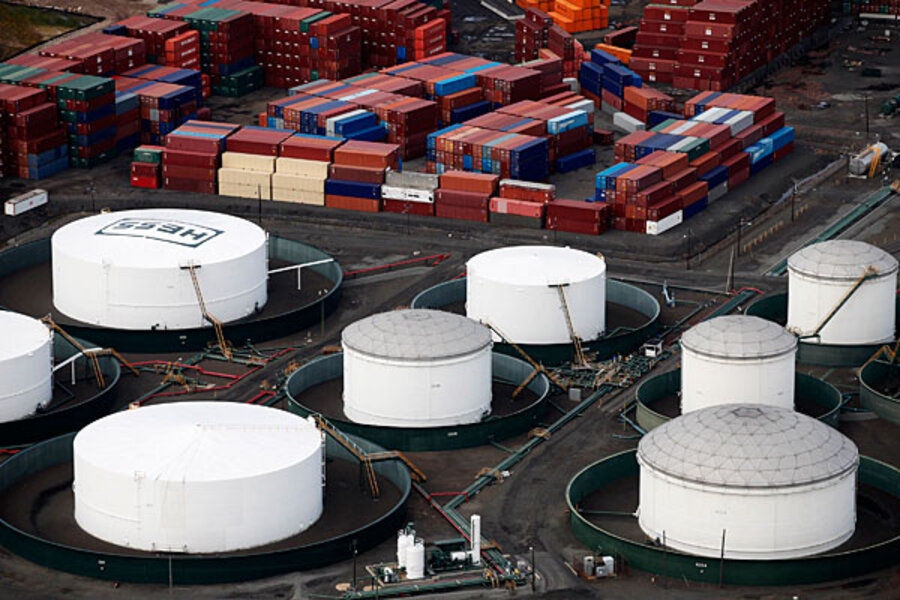Oil prices top $78 a barrel - double the cost of a year ago
Loading...
| New York
Energy traders are blaming the cold weather for a late-year rise in the prices of crude oil and natural gas.
Yes, the freeze that has extended from the Midwest to the mid-Atlantic states is helping to boost demand for anything that takes the chill out of the house.
The result: Natural-gas prices have soared 78 percent in the past 30 days, and even home heating oil is up 2.5 percent. The price of a barrel of oil is now more than $78 – about double the price of a year ago.
Rising energy costs hit consumers directly in the pocketbook. Most Americans have to spend money to drive their car and heat their homes.
“Energy is a major expense, especially this time of the year,” says David Wyss, chief economist for Standard & Poor’s in New York. “We’re looking at substantially higher costs for the average American.”
Through November, the overall price of energy, as measured by the Consumer Price Index, is up 7.4 percent this year. But some components of the energy mix are up much more. For example, the commodity component, which includes fuel oil (to heat homes) and gasoline, is up 20 percent. According to AAA, the price of a gallon of gasoline is $2.58, compared with $1.65 a year ago.
“The rising energy cost is about $70 billion out of our purchasing power,” Mr. Wyss says. “While it’s not like [the summer of 2008] when gasoline hit $4 a gallon, it’s a lot of money – about half the amount of the proposed new stimulus bill.”
In the case of oil, one reason for rising prices is a surprise decrease of 4 million barrels in the US inventory.
“Some of the rise is probably related to the cold weather and the heating-oil demand,” says Phil Flynn, a Chicago-based senior market analyst at PFG Best. But much of problem, he adds, was the weather-related closure of the Houston Ship Channel, which kept tankers from unloading oil. “A lot of the problem seemed to be an import problem in the Gulf Coast, which I think will be resolved next week as the weather improves,” Mr. Flynn says.
But east of the Mississippi, the weather is not expected to improve anytime soon. Arctic temperatures will be around for at least the next two weeks, says AccuWeather meteorologist Paul Pastelok in State College, Pa.
“There might be a day or two when it goes back to normal, but most places east of the Mississippi will be below normal,” he says.
In New York, he says, temperatures will be five or six degrees colder than normal over the next 15 days. It’s even worse for Baltimore and Washington, where it will be seven or eight degrees below normal. Chicago will be five degrees colder than normal.
“On top of that ... it’s cold not just here, but in Europe and Asia,” Mr. Pastelok says. The colder weather in those places could also increase demand for energy.
Energy traders are watching more than just the weather. Recently, another factor has been whether the US dollar was rising or falling. When the dollar has dropped, traders have bought commodities, such as oil, as a store of value. That has sent the price of oil up.
Yet now, says energy analyst Mike Fitzpatrick of MF Global in New York, traders are watching the dollar-oil relationship in terms of the economy.
“If the dollar rises because buyers [of US dollars] think the US economy is coming back, then oil will rise,” Mr. Fitzpatrick says. “But if the dollar rises because of rising Treasury yields – reflecting concern about inflation and the huge amount of refinancing [of Treasuries] that has to be done – oil will go down in price.”
If interest rates rise, the cost of borrowing will rise for businesses, he reasons. This would ultimately depress demand for oil.
-----
Follow us on Twitter.





